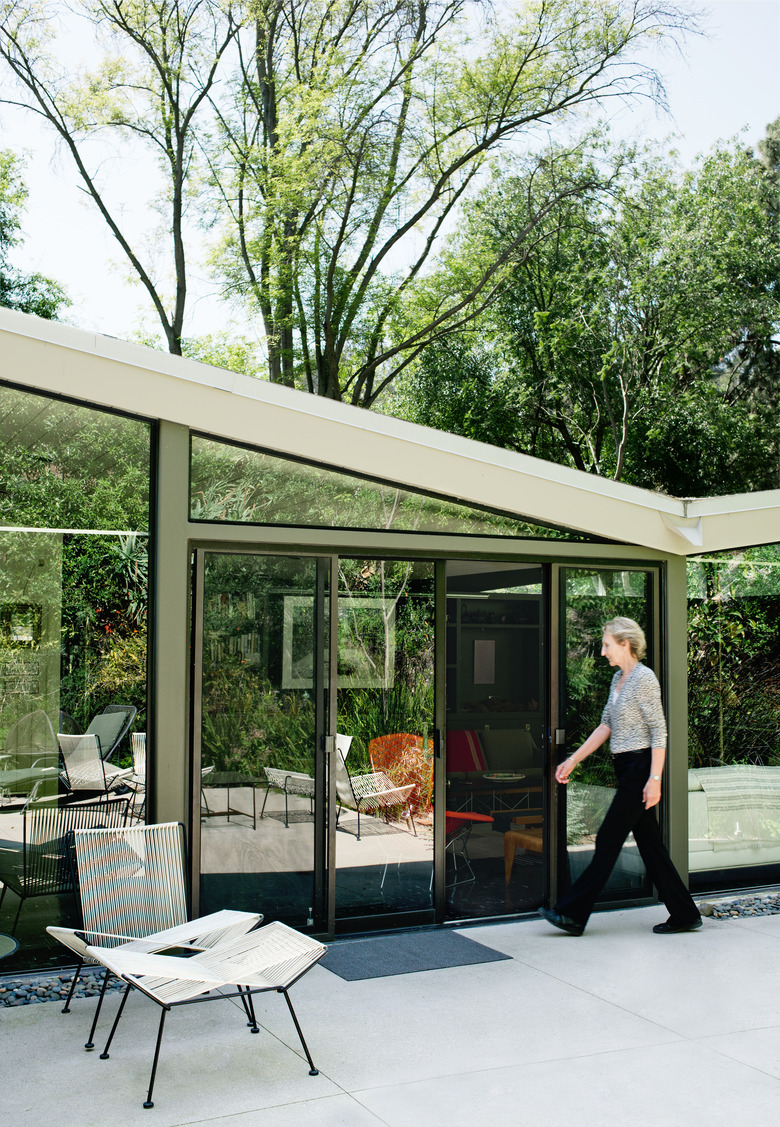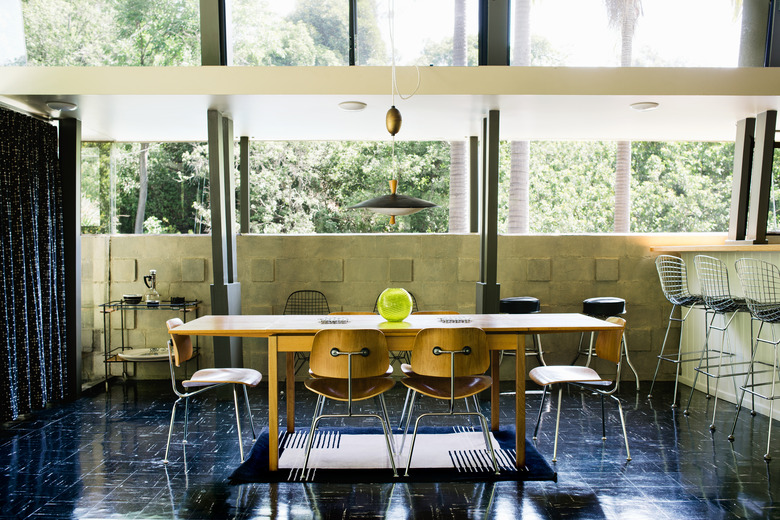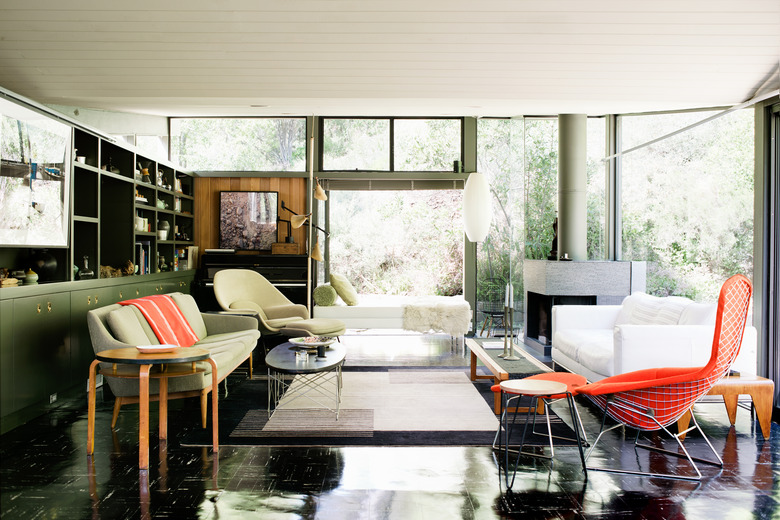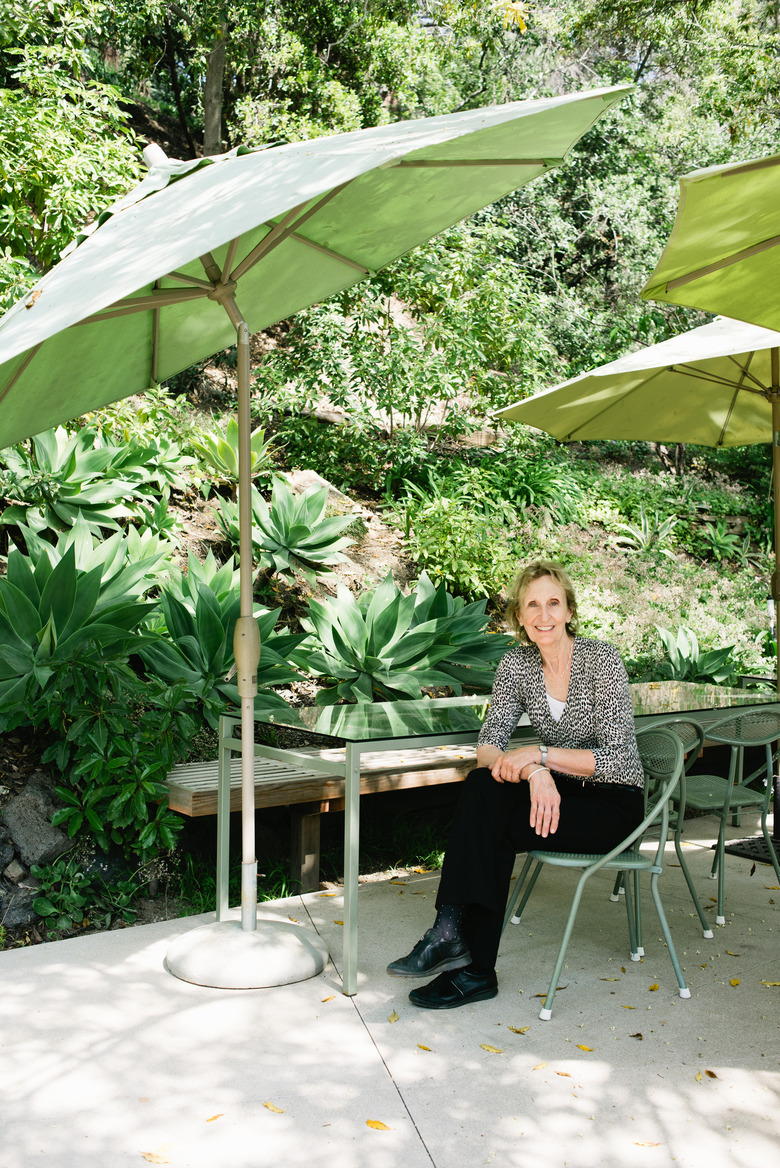You Can Thank Cory Buckner For Helping To Save One Of L.A.'s Most Impressive Neighborhoods
"This side of the house gets morning sun, which is really delicious," architect Cory Buckner noted as she showed off her impeccable midcentury home in Crestwood Hills.
It's an idyllic community located high above Sunset Boulevard in Brentwood, California. The hillside enclave rests atop a once-remote section of Los Angeles's Santa Monica Mountains and was founded in response to a severe West Coast housing shortage after World War II. In 1946, four veterans returning from the war decided to pool their resources and buy an acre of land here.
Their plan was idealistic, even for the era's optimism: they wanted to build homes on the property with a central recreation area to be run as a cooperative.
The four men told their friends about the land and grew the community to 25 interested neighbors. Then, those friends told others and the list grew to 150. Later, an article ran in the Hollywood Reporter and soon 500 people were interested. But in the end, only 350 houses were built.
The biggest mistake the four men made was buying land on a hillside — ultimately, each lot cost much more to develop than anticipated and the cooperative spirit diminished. But some of their work, including Bucker's address, stands today. Strong architectural guidelines still determine the style of the houses, so "you won't see any Mediterranean style in the neighborhood," she noted.
Later in her tour, she's sitting at her dining table where wooden Eames dining chairs are set in perfect contrast with glossy black-and-white vinyl Kentile floors, which are original. "It has two percent asbestos in it," Buckner remarked. "It doesn't seem to be a problem since everybody in this neighborhood seems to live to be 104."
Her home is located just beyond a gate in the adjacent nursery school parking lot, another standing relic of the veterans' vision. It was once the architectural office for the Mutual Housing Association (MHA), which was the name of the community before it became known as Crestwood Hills. This is where architects A. Quincy Jones, Whitney Smith, and structural engineer Edgardo Contini designed the properties using exposed, non-luxury materials like plywood, concrete block, and redwood.
Buckner didn't know about the neighborhood's history until friends who lived there wanted her opinion on a house they were remodeling. They had hired another architect who removed a beam from the living room, and she thought that the upgrade could be more sensitive to the existing structure. Soon, she moved into the house herself.
"The first thing [I] did when we moved in is put back some of these things that I had taken out for my friends," she admitted, laughing. "I met their needs, but I'm much more stubborn now."
That sense of serendipity, where a chance event shifted the next phases of her life, seems to be a theme for Buckner. While in college at Chouinard Art Institute, she decided to take a long road trip from Palmdale to her parent's place in Malibu in an effort to keep driving her new car, a used Volkswagen bus. She drove until something in the distance compelled her to stop — a structure sitting on a hilltop that resembled a Shinto shrine.
"Just beautiful," recalled Buckner. She found the driveway and walked up with her drawing pad, sat less than 100 feet away and started sketching.
She didn't realize that inside the structure was architect Fred Lyman and his then secretary. Buckner recounts that the secretary suggested something like, "'Fred, there's a pretty girl, why don't you ask her if she needs a job?'" Buckner remembered. "So, this handsome man came out and asked, 'Would you like a job?' And I said, 'Well, yes, actually.'"
She worked for Lyman on weekends and after class. At some point, she told him that she knew how to draft and he realized she would make a much better draftsman than secretary. So, he moved her to the drafting room upstairs.
"I apprenticed with him for many, many years," Buckner recalled. "I managed to get enough time clocked in to get my license."
By 1978, Lyman had bought 1,000 acres of land in Minnesota and left his Los Angeles office to create a school. One day, while at her drafting station tying up loose ends, the phone rang. She told the caller that Lyman had moved, but that she was happy to meet.
"So, boom! I get a new house in Malibu on Broad Beach Road starting out of the gates," Buckner said. "And they had no requirements... they knew nothing about architecture, and I got a free hand."
The residential work snowballed from there. And while she notes that she didn't know why she wasn't intimidated, she also knew that she was prepared.
"I'm not an 'ego' architect," she said, stating that she works well with people and listens to what they want. "I wasn't trying to establish 'my' style, even though it was a modernist language. It was sort of like Fred Lyman, or A. Quincy Jones, or David Roberts. I guess that's why I'm attracted to their work."
Unfortunately — or fortuitously, perhaps — a fire had destroyed the home she shared with her late husband, architect Nick Roberts, in 1993. She told their realtor: Crestwood Hills or bust. The realtor mentioned a house there that had been for sale but had since been taken off the market. They decided to try their luck and knock on the door anyway.
"I got as far as the door opening and I said to myself, 'This is it. I don't care what I have to do to get this house,'" she remembers. She then got the owner to agree to sell.
"It sounds crazy now but these houses were not really sought after," Buckner pointed out. "They were sought after for lot values, so when Nick and I moved in, we realized they were being torn down right and left. [So] we started a little preservation movement."
They began by inviting the owners of the original MHA houses to a meeting along with the person in charge of the Historic Preservation Overlay Zone. The entire neighborhood could be declared historic, if only people were interested. But not even one of the living founders wanted to help. So, Buckner kept at it. Two years later, she tried again with five more sites that fit the protective guidelines.
"By then, there was some media play about this and people were getting into modern architecture — that this was actually valuable to keep, so we kept the developers at bay for a little while," she said.
With Buckner, the neighborhood gained a built-in architect and preservationist. Once she and her husband restored their house, the word got out and she picked up more and more work. Of the 30 MHA homes left intact, she's restored 12. And in all, 15 of the homes have been designated as historic monuments within the city.
Today, an empty lot in Crestwood Hills will cost a buyer nearly $2 million. And every realtor site boasts some reference to the historic significance of the area. That's why, in 2002, Buckner was awarded the Los Angeles Preservation Award for her efforts.
Decades after the veterans made a plan for a modernist hamlet, and even many years since she stumbled upon their neighborhood, Buckner can still admire the house she saved while working on others in that kindred spirit of tenacity.
"I would say I'm a court architect here," she joked. "It's my legacy."
Cory Buckner focuses on restorations and modern residential design in the Los Angeles area. She is the author of A. Quincy Jones.



